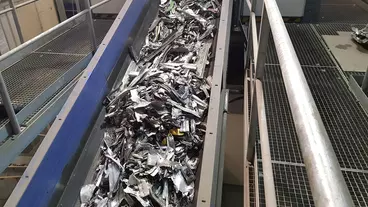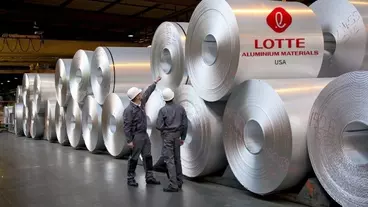Processing of aluminium scrap with a rotor shredder

For the processing of aluminium scrap, a specialized waste management company in southern Germany has opted for a rotor shredder from BHS-Sonthofen.
The rotor shredder not only processes the aluminium scrap but also optimally breaks up composites, which results in fractions with a high degree of purity.
Aluminium scrap accumulates in many different forms, ranging from aluminium profile rails and Zorba fractions to shredder heavy fractions. A major challenge for recycling plants is contamination with other materials, in particular. For example, wood, plastic and even other metals adhere to the sought-after aluminium. Which is why the materials need to be separated when processing these mixtures. For this reason, a waste management company based in southern Germany turned to BHS-Sonthofen at the end of 2019 in search of a new recycling solution for the 30,000 t of non-ferrous metals that the company recycles annually.
Rotor shredder from BHS the ideal choice for aluminium scrap processing
The processing expert had already had good experiences with technology from BHS-Sonthofen in the past. The company once again opted for BHS, primarily due to the longevity and precise fit of the recycling solutions. Christian Kühn, sales director for Recycling and Environmental Technology at BHS, explains: “The proven Rotorshredder RS 2018 was fitted with additional reinforcements for the processing of aluminium in accordance with the special requirements.”
After receiving a hardened housing, a double-walled base, and a new suspension system, it was commissioned in December 2019. The waste management company is satisfied with the start-up phase as well as the first months of operation.
The right processing solution for every scrap volume
The recycling of raw materials plays an increasingly important role. For example, a recycling plant’s profitability hinges on high purity levels in particular. BHS-Sonthofen considers each application individually and chooses a shredding solution appropriate to the situation. “Impurities are a major problem when it comes to aluminium scrap,” explains Christian Kühn. “It’s not just about shredding the feed material, but it’s also about breaking down the materials in particular.”
The rotor shredder uses selective shredding to do so; aluminium is ductile, impurities such as plastic are hard and brittle. Impact forces deform the aluminium, causing the impurities to break down. In the process, the composites are efficiently separated from the feed material. After classification takes place, the high-purity aluminium is ready for sale.
“It is to our advantage to have our own test centre where we can carry out tests on the entire recycling process with the respective feed material, including the subsequent profitability calculation,” says Kühn. “We can provide the customer with the exact machine or plant that is suitable for their requirements.”

MetalX plans to expand its production capabilites with a new greenfield aluminium rolling slab manufacturing plant, an advanced scrap shredding and sorting facility, and a dedicated logistics hub.

Hydro has entered a multi-year agreement with Sims Alumisource to purchase processed aluminium scrap for its North American extrusion business.

Lotte Aluminium Materials and SMS Group have agreed a strategic partnership for logistics and digitalization services.
